If churches want to continue to thrive in the decades to come, they have to be seen as an attractive place for unaffiliated people.
Opinion: Why politics may kill white churches
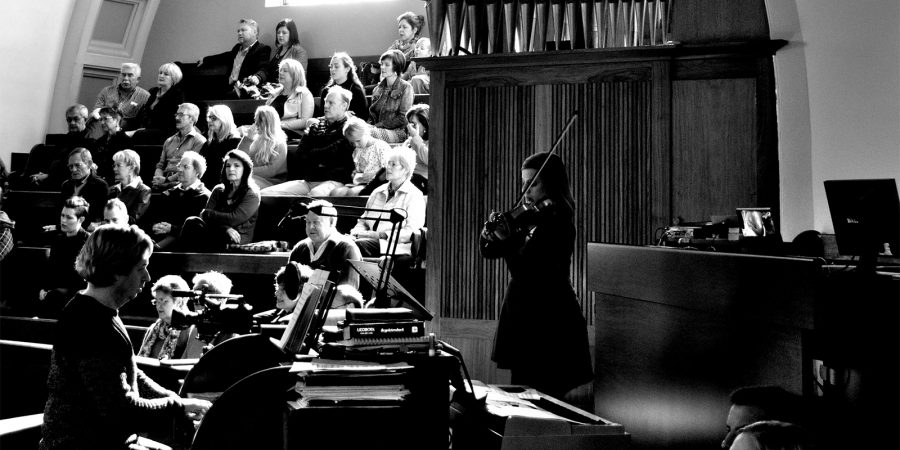
If churches want to continue to thrive in the decades to come, they have to be seen as an attractive place for unaffiliated people.
However, both Catholic and Protestant churches have undergone a dramatic shift in the last two decades that may undermine their ability to attract outsiders.
White Christians — white Catholics, white evangelicals and white mainline Protestants — have shifted to the right in their partisan affiliation and now primarily identify with the Republican Party.
This rightward drift has placed these churches far away from the two groups that they need to attract the most — young people in general and people of color — both of which have maintained a moderate political stance in recent years, according to data from the General Social Survey over the past four decades.
While the staggering political homogeneity of white Christianity may provide a sense of belonging to current adherents, it may increasingly turn away people who hold different political views
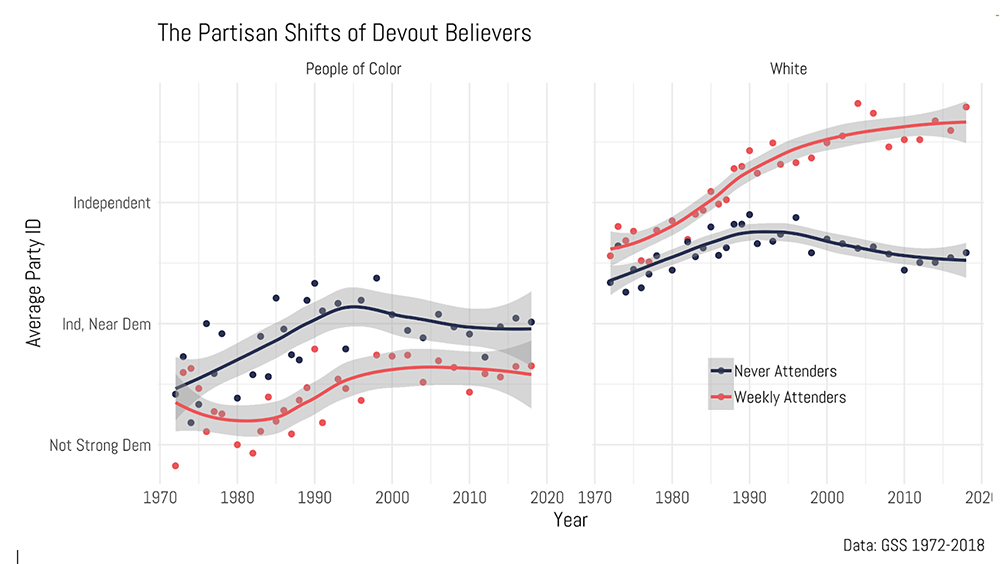
In 1972, white mainline Protestants were the most Republican group, with evangelicals in the middle of the political spectrum and Catholics solidly in the Democratic camp.
However, the three groups have moved in interesting ways since the late 1970s.
The evangelical line veered quickly toward the Republican side of the spectrum beginning in the mid-1980s and then continued to drift even further to the right.
At the same time, weekly churchgoing Catholics who could have been accurately described as solid Democrats in 1972 have seen a steady and unabated march to the right, ending up just to the right of the “Independent” option in 2018.
To be more specific, while white evangelicals moved 22.5% to the Republican side, Catholics moved 18.1% in that same direction.
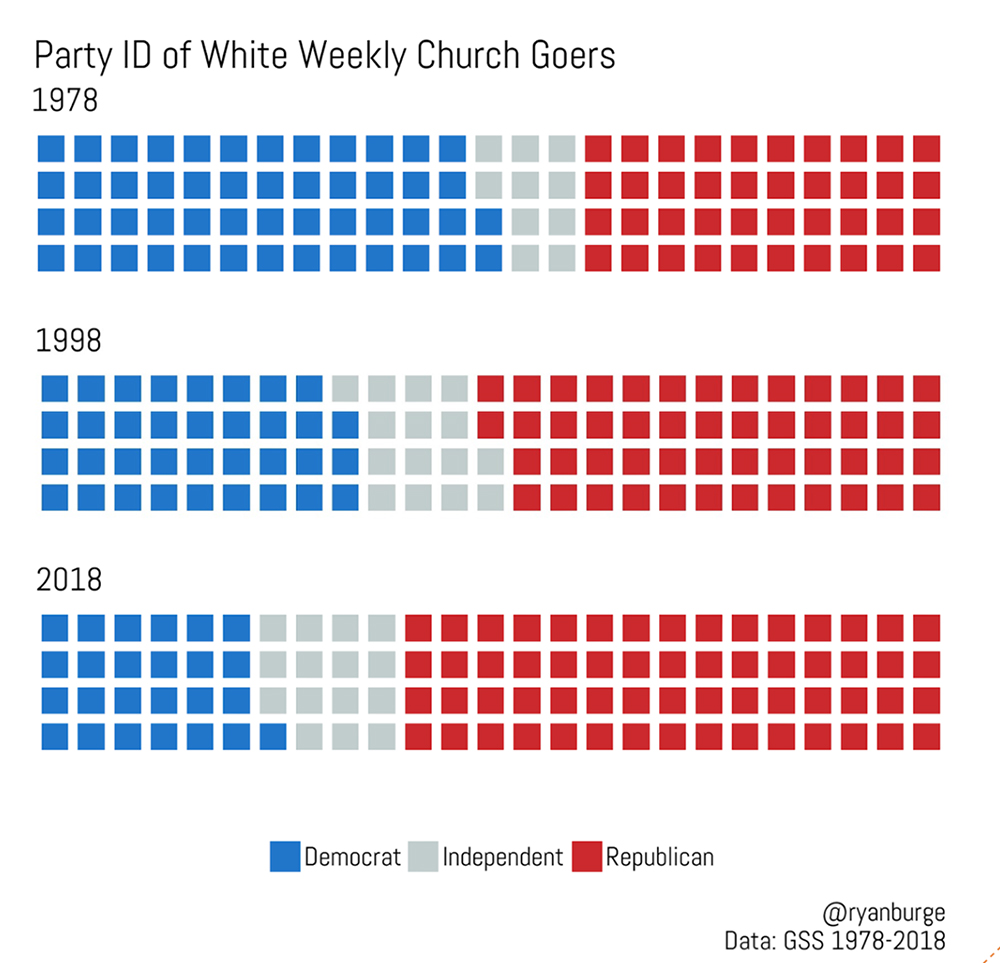
The waffle chart above displays this in a slightly different way but is incredibly telling.
In 1978, half of white weekly churchgoers were Democrats. By 1998, that number had dropped to 35% Democrats. Today, it’s just 25%.
Meanwhile, the Republican share has jumped 20 points in the last 40 years, going from 40% to 60% over that time frame.
While devout white evangelicals kept drifting to the right, white young people actually changed course and moved back toward the Democrats and have kept moving that direction for the last 25 years.
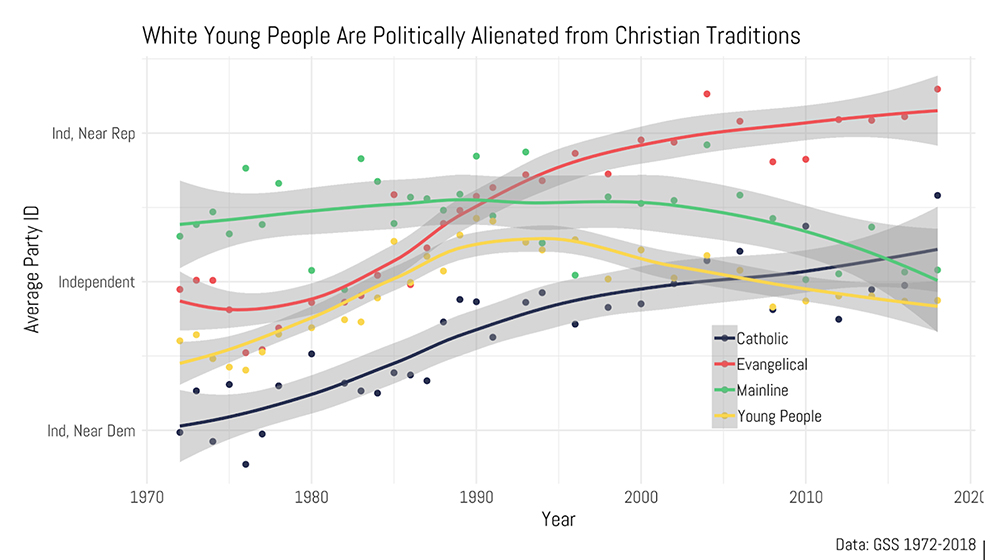
In addition, while white Catholics used to be more to the left of white young people as a whole, their two lines crossed right around the election of Barack Obama in 2008, and white Catholics continue to move toward the right.
If young people are the future of the church, it’s hard to see how both white Catholics and white evangelicals can effectively reach out to the younger generations when their politics become further and further polarized.
In other words, the close ties between white Christians and the Republican Party may drive a wedge between them and the younger, unaffiliated young people they want to reach.
And while mainline Protestants seem the best situated to attract white young people, their share of the population has dropped by nearly two-thirds and the average age of a mainline Protestant was 58 in 2018.
Both facts make it difficult to appeal to the younger generation.
This paints a bleak portrait for American religion.
The one group that is positioned to attract young people and people of color is aging and shrinking, and the other two Christian groups are moving in the opposite political direction of the youngest generation, which is politically and racially more diverse.
All the while, black born-again Protestants are now 20% more likely to identify as Democrats in the last decade. And though 60% of Hispanic born-again Protestants claimed a Republican Party identification in 2006, that has declined to 40% in 10 years.
While white Christianity has shifted hard to the right, religious people of color have become more attracted to the Democrats.
As the country becomes more diverse, churches hope to become more diverse as well. But the political divides may keep people of color out of white evangelical and Catholic spaces.
Devout white Catholics and white evangelicals may be happy to cloister into their religious enclaves during the Trump presidency, but they need to understand that the distance between them and the people they are trying to reach grows larger every election cycle.
(Ryan Burge teaches political science at Eastern Illinois University and is co-founder of Religion in Public. The views expressed in this commentary do not necessarily represent those of Religion News Service.)
Other RNS Opinion articles… https://xpian.news/category/national/rns-opinion/


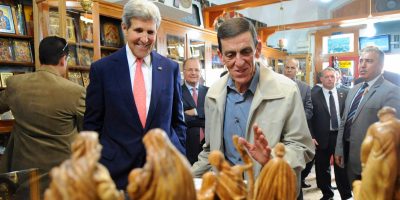
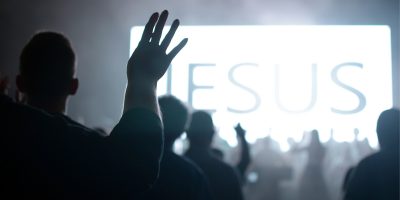
Comments are Closed